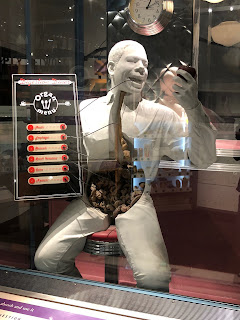Event 1/Extra Credit

Arctic Wolves For my event, I visited the Los Angeles Museum of Natural History. Specifically, I toured the halls of African Mammals and North American Mammals. The exhibits featured many large, well known animals like lions, grizzly bears, elephants etc. Animals from around the world had been preserved and very artistically displayed in well-thought out exhibits with very detailed painted backgrounds. The science of ecosystems and nature was blended with artistic tinge to create these life-like displays of these commonly known animals. In addition to being well known, one thing I noticed that a lot of the animals on display had in common was that they were endangered. It is no secret that the development of human civilization over the past few thousands of years has driven some animals to extinction, including the marsupial rhino and giant kangaroo. Primarily human action has caused the animals on exhibit in the museum to become extinct as well (Durfee). Lowland Gorilla T

